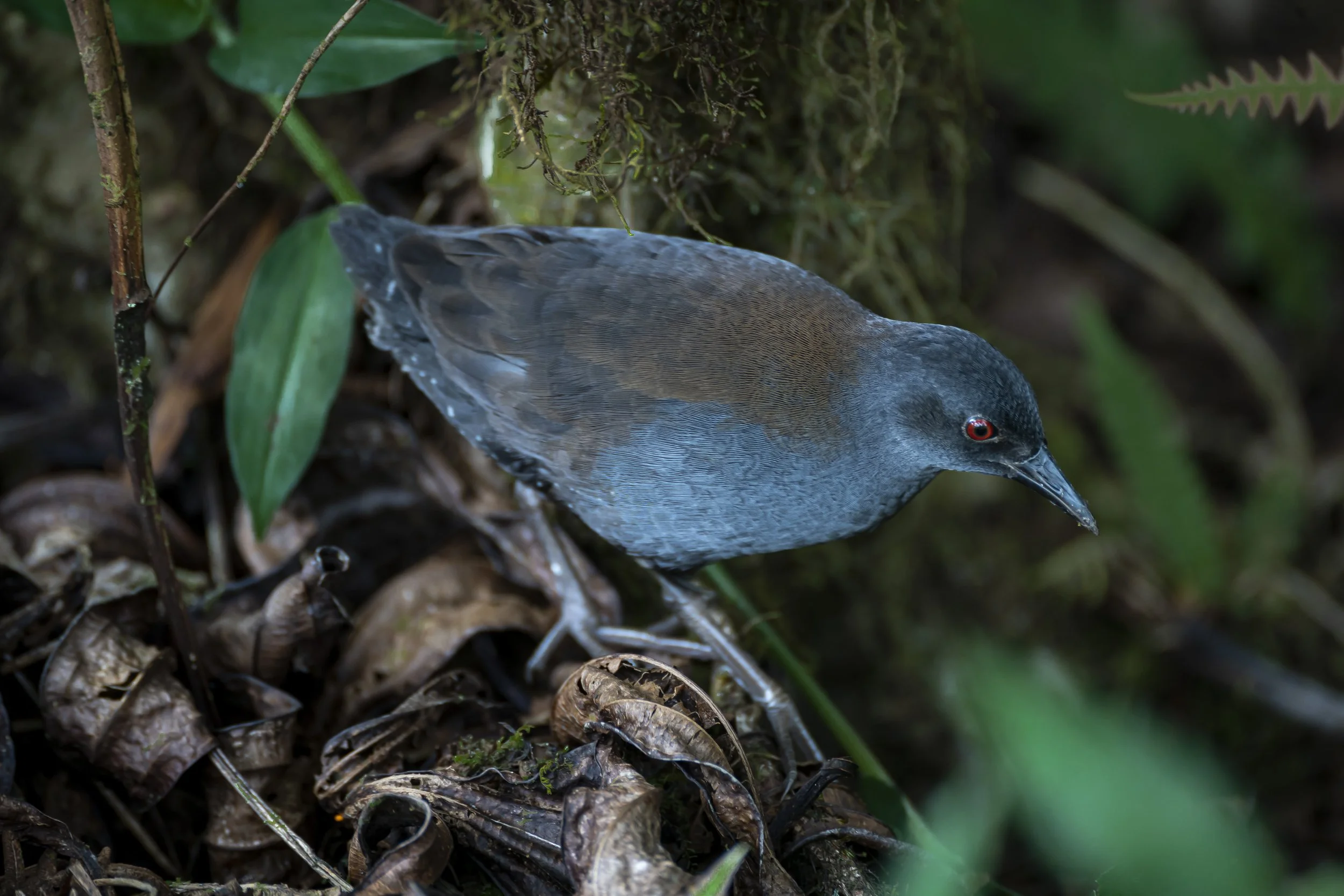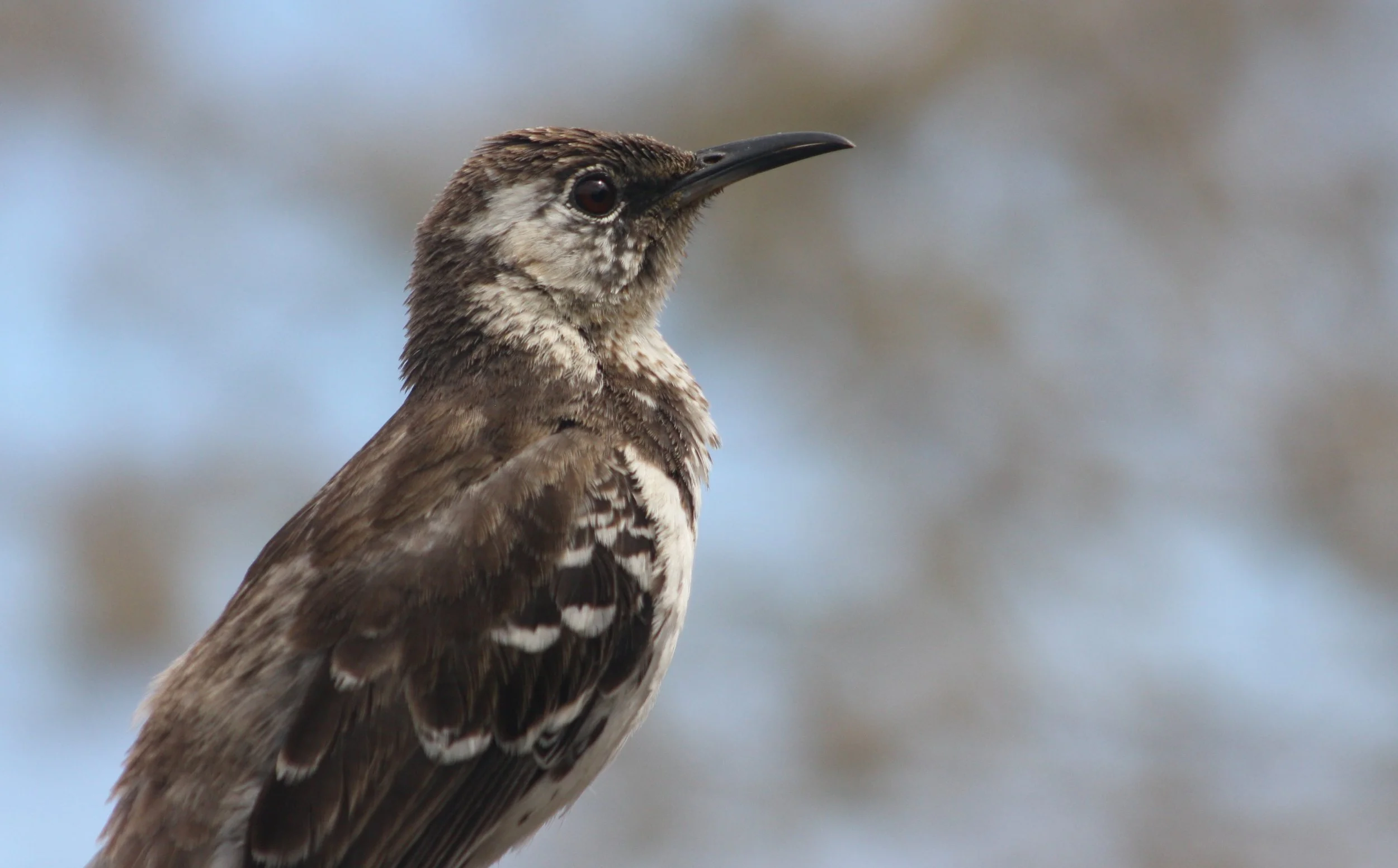
REWILDING
FLOREANA
Floreana is the sixth largest island in the Galapagos, famed for their biodiversity. Floreana itself has several endemic species - species of plants and animals that only exist there. Unfortunately, Floreana's unique wildlife has suffered over the last two centuries. Right now, however, you can lead the most ambitious and important rewilding effort on an inhabited tropical island. You can bring back wildlife that has been lost for generations.

THE IMPORTANCE OF THE GALÁPAGOS
The Galapagos Islands, located in the Pacific Ocean 600 miles off the coast of Ecuador, were one of the first World Heritage Sites, designated in 1978. Isolated from the mainland, plants and animals that arrived evolved into unique species. Iguanas that can swim underwater, giant tortoises that live more than 100 years, and finches with unique beaks. The oceans around the islands are teaming with life. Massive whale sharks and manta rays swim through the currents, while sea turtles nest on sandy beaches and sea lions rest in rocky coves.

SPECIES LOSS
Early whalers and pirates hunted the Floreana Giant Tortoise until none were left. They also brought with them invasive predators, like rats and mice, decimating native wildlife. Many species went locally extinct. Some species clung to life only on small islets off the coast of Floreana, free from the introduced predators, while others maintained populations on other large Galapagos islands. Amazingly, recent genetic tests showed that ancestors of Floreana’s tortoises were brought to another island, Isabela, where they bred with the Wolf Volcano Tortoises. They maintained most of the genes of the Floreana tortoises. An ambitious plan with many partners was launched to reintroduce them to Floreana.
Removing introduced invasive predators is the first step to rewilding Floreana. Using advanced technology, including drones with thermal sensors, camera traps with AI to identify individual species, and helicopters to reach inaccessible parts of the island, we have made significant progress. While invasive species control continues, by the end of 2023, nearly no invasive predators were left.

Nearly 160 people live on Floreana today. The people on Floreana led the way and are already benefiting from the work. Without rats and mice, their crop yields have gone up dramatically. The return of tortoises and birds will bring more visitors and more income from tourism. This is a win-win for people and wildlife.
We will reintroduce the Floreana Giant Tortoise back to the island first. The tortoise is an environmental engineer - it moves around soil, spreads seeds of native plants, and creates habitat for other wildlife. We won’t stop there. Over the coming years, in total, we will reintroduce 12 endemic species back to Floreana.
Floreana Giant Tortoise (Chelonoidis sp.)
Galapagos Rail (Laterallus spilonotus)
Lava Gull (Larus fuliginosus)
Galapagos Hawk (Buteo galapagoensis)
Vegetarian Finch (Platyspiza crassirostris)
Gray Warbler Finch (Certhidea fusca)
Sharp-beaked Ground Finch (Geospiza difficilis)
Large Ground Finch (Geospiza magnirostris)
Floreana Mockingbird (Mimus trifasciatus)
Barn Owl (Tyto furcate punctissima)
Little Vermilion Flycatcher (Pyrocephalus nanus)
Floreana Racer Snake (Pseudalsophis biserialis biserialis)

You can also mail a check payable to:
Jocotoco Conservation Foundation P.O. Box 38274 Baltimore, MD 21231
Please contact Jajean Rose-Burney, the Director of Jocotoco US, at 1 (716) 247-1255 or jajean.rose@jocotoco.org if you have any questions about how to donate.
Jocotoco Conservation Foundation is a US tax-exempt non-profit organization, under the section 501(c)(3) of the Internal Revenue Code. All charitable donations are deductible to the full extent allowed by law. EIN: 83-2027203





The Floreana Island Restoration Project is led by the Galapagos National Park, the Galapagos Biosecurity Agency, and co-executed by Jocotoco, with technical and scientific support from other national and international institutions.
Photo Credits
Floreana Island, Joshua Vela
Galápagos Pink Land Iguana, Marlon del Águila
Galápagos Tortoise, Joshua Vela
Floreana family with their piglets, Joshua Vela
Marine Tortoise, Joshua Vela
Mikel Goñi, drone specialist flying a thermal drone, Joshua Vela
Galapagos Sea Lion, Marlon del Águila
Petrel Monitoring with acoustic recordings, Juan Pablo Mayorga
Galapagos Marine Iguana, Mara Speece
Floreana Snake, L Catedral
Copyright (C) 2024 Fundación de Conservación Jocotoco. All rights reserved.











